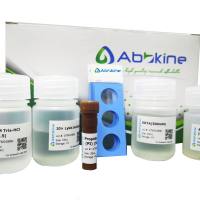Polymerase chain reaction (PCR) is an important qualitative procedure in the routine microbiology laboratory for detecting the presence or absence of potentially harmful microorganisms in clinical specimens (1 ,2 ). The use of PCR to quantify an infectious agent in a clinical specimen (e.g., viral or bacterial load) is advantageous for monitoring disease progression and efficacy of treatment, for differentiating between asymptomatic and symptomatic infection, or for quality control of false positive samples. End-point titration-PCR (ET-PCR) is a simple method for differentiating between the presence of low, medium, or high amounts of viral, fungal, or bacterial DNA in a test sample. Basically, the qualitative PCR method (3 ) is used in an ET-PCR to amplify a specific target sequence in serial dilutions of a DNA sample (4 ). The limit of detection of the amplified product, which is the end-point dilution or titer, is the quantitative index for the DNA target in the sample. End-point titers obtained by ET-PCR have been shown to increase proportionally with increasing amounts of standard DNA (4 ). The result of an ET-PCR can be presented as a titer, dilution, DNA copy number, or amount of a specific DNA sequence relative to an external standard or as relative differences between samples. On this basis, ET-PCR has been used to quantitate the presence of viral and bacterial DNA in clinical specimens (4 –10 ). The ET-PCR method described here is for the quantitation of cytomegalovirus (CMV) DNA in leukocytes (4 ).






